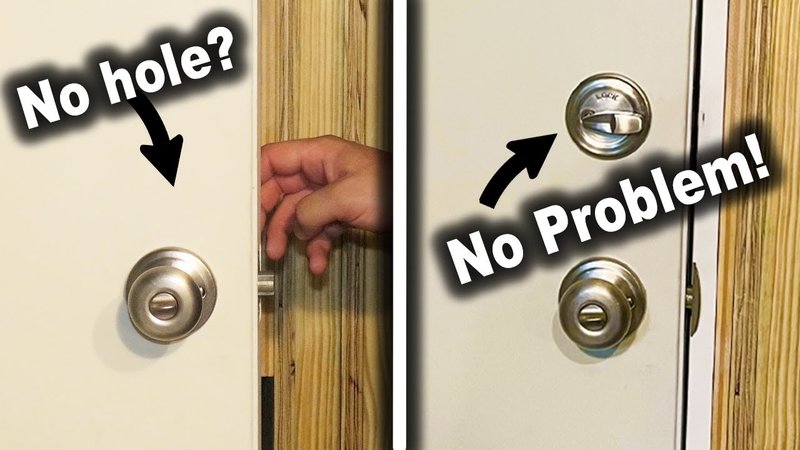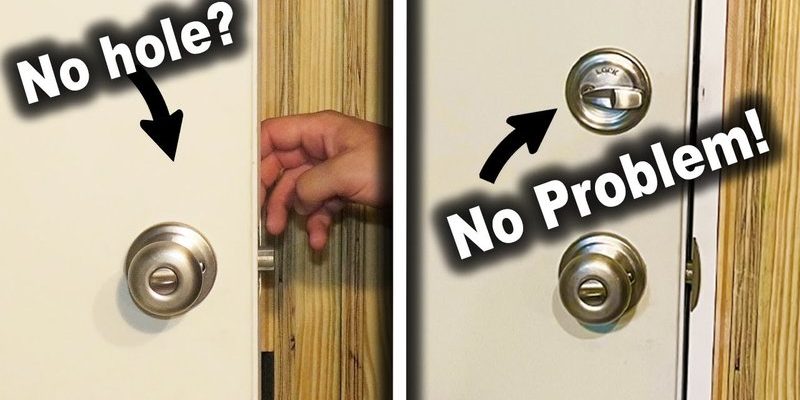
Uneven bore holes can happen for several reasons. Maybe the drill slipped a little, or perhaps the measurements weren’t precise. Whatever the cause, fixing it doesn’t have to be a headache. Understanding the problem—and how to address it—can save time and ensure your project turns out well. So, let’s dive into how to troubleshoot those pesky uneven bore holes and get your hardware installed correctly.
Understanding Bore Holes and Their Importance
When you think of bore holes, picture little tunnels made by your drill. These are the openings where screws or bolts will go to hold your hardware firmly in place. If these holes are uneven, it can result in hardware that doesn’t sit right, creating misalignment or even damage.
You might be wondering why being precise really matters. Think of it this way: if you’re building a house, the foundation needs to be strong and level. The same goes for your shelves or cabinets. If those bore holes aren’t where they need to be, everything above them can end up swaying, pulling, or even breaking over time.
In terms of your remote type and brand, having stable support ensures that everything functions seamlessly. If your remote isn’t properly mounted, it might not make proper contact with the devices it’s meant to control, leading to further troubleshooting.
Common Causes of Uneven Bore Holes
There are a few typical reasons why you might end up with uneven bore holes. One common culprit is measurement errors. Often, people rush through the measuring process. If you measure one side of a cabinet differently than the other, you might be setting yourself up for trouble.
Another issue can arise from your drilling technique. If you’re not holding the drill straight, the angle can cause wobbling and lead to uneven holes. Think of it like trying to write with a pen that has a bent tip; the angle makes it hard to write smoothly.
Lastly, the type of material you’re drilling into can contribute to inconsistencies. Softer woods may splinter more easily, while harder materials may require more force, which can lead to uneven holes if you’re not careful.
Tools You Need for a Smooth Installation
Preparing for a project means having the right tools on hand. Here’s a quick list of what you’ll need to ensure your holes are even:
- Measuring Tape: For precise measurements.
- Level: Ensures everything is straight.
- Drill: Preferably with a depth stop to prevent drilling too deep.
- Wood Screw or Dowels: For added stability in your hardware installation.
- Clamps: To hold everything secure while you work.
Having these tools ready can make your task more manageable. You might even find it helpful to keep a small toolbox nearby, so you don’t lose time searching for what you need.
Tips for Drilling Even Bore Holes
To avoid the frustration of uneven bore holes, consider implementing a few techniques during your drilling process.
First, always start by marking your holes with a pencil. Using a square can help ensure they’re perfectly aligned. Then, when you drill, keep your drill level and apply steady pressure. Think of it like driving a car; if you steer too hard to one side, you veer off course.
You may also want to use a drill guide. These handy devices can help keep your drill straight, especially if you’re new to DIY projects. A bit of patience goes a long way; taking your time during this phase can save you headaches later.
How to Fix Existing Uneven Holes
If you’re already facing the issue of uneven bore holes, don’t panic! There are several ways to fix this problem without starting from scratch.
One method is to use wood filler in the holes that are too large or misaligned. Once dry, you can re-drill new holes in the correct spots. It’s similar to patching a wall before painting; it creates a smooth surface that will hold up well.
Another option is to reposition your hardware slightly, allowing you to cover the uneven holes. This can work well if the misalignment isn’t too severe. Just be careful that the new positioning still provides adequate support.
If all else fails, you might consider using screws that have wider heads or even toggle bolts, which can help cover imperfections while still providing secure support.
Preventive Measures for Future Installations
Once you’ve tackled uneven bore holes, it’s time to think ahead. You don’t want to find yourself in the same situation again, right? Here are some preventive measures you can take:
– Double-Check Measurements: Always measure twice before drilling. It’s an old saying, but it really helps avoid mistakes.
– Use the Right Drill Bits: Make sure you’re using bits that suit the material you’re working with. This can prevent slipping and splintering.
– Practice Good Technique: Hold your drill straight and steady. It might be helpful to practice on some scrap wood if you’re feeling unsure.
– Take Your Time: Rushing can lead to mistakes. Slow down, enjoy the process, and focus on each step.
By putting in the extra effort upfront, you can save yourself a lot of work down the line.
Troubleshooting uneven bore holes can seem daunting, but with the right approach, it’s manageable. Remember that even the pros face hiccups from time to time. The key lies in preparation, patience, and practice.
As you tackle your next hardware installation, keep these tips in mind and you’ll find that drilling those holes becomes second nature. Whether you’re working on a simple shelf or a more complex piece, a little know-how can go a long way in ensuring your project is a success. So, grab your tools and get started—you’ve got this!
